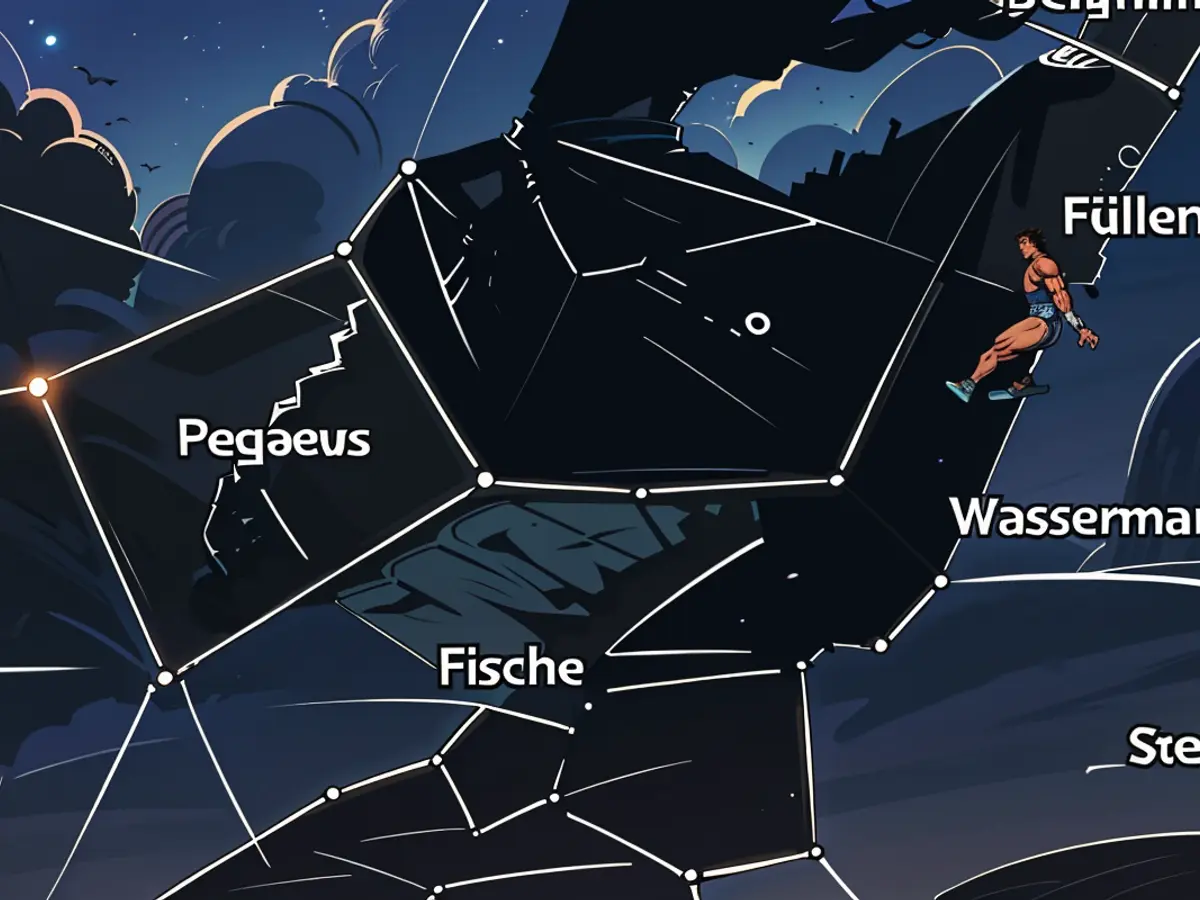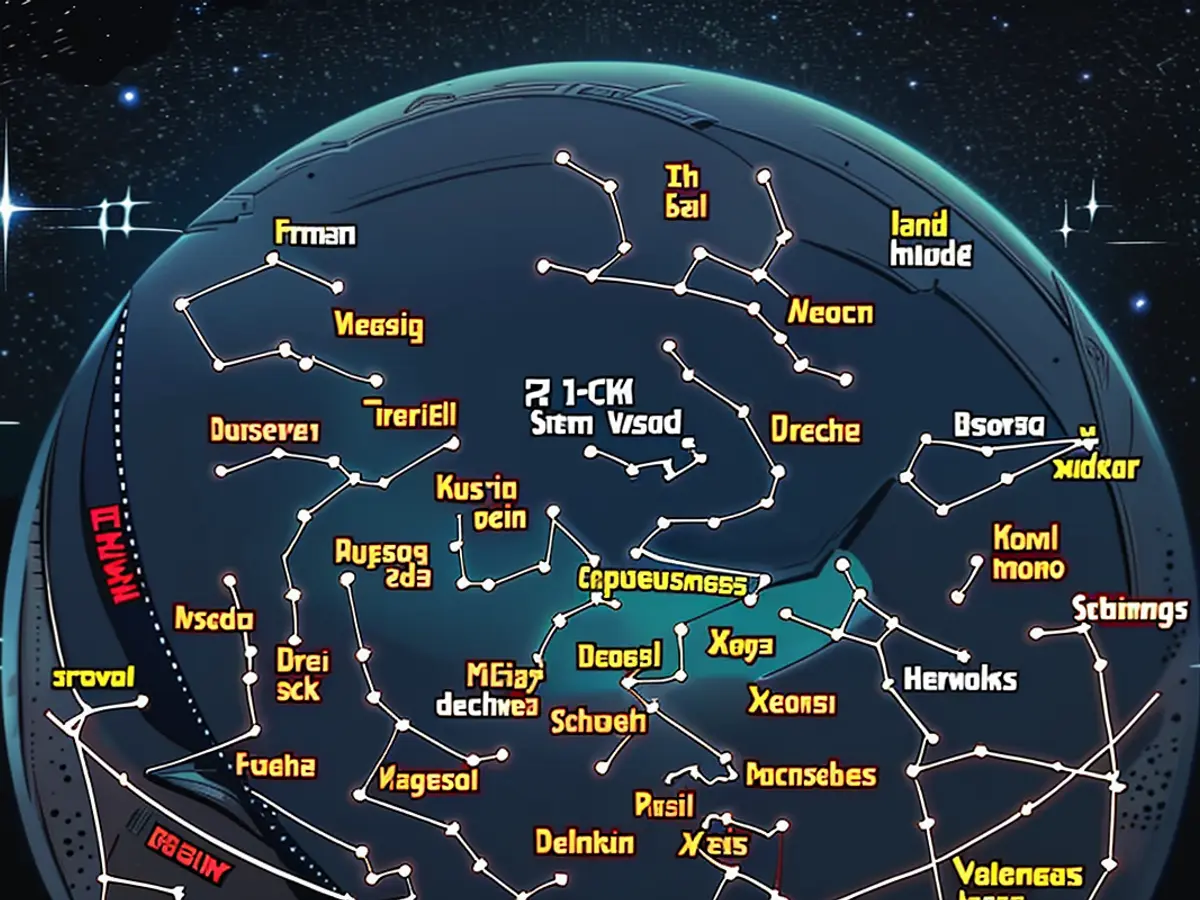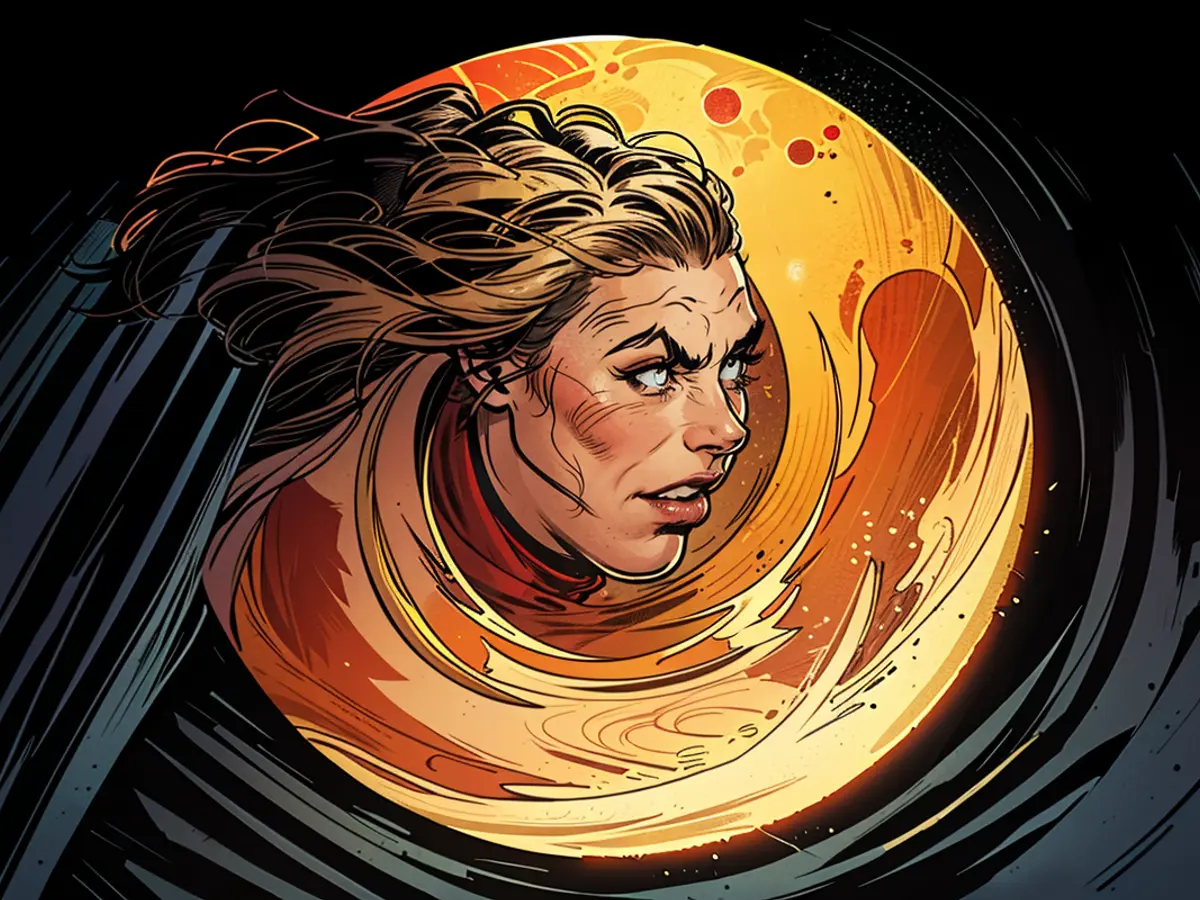Lunar eclipse aligned with enhanced likelihood of calamity
September embarks on an enchanting nighttime display with a partial lunar eclipse. On the 18th, the moon passes through Earth's penumbra, barely grazing the umbra at its midpoint around 4:44 AM, covering merely 9% of the moon's apparent diameter. The moon's northwest region will appear in a dark, reddish hue. The moon enters the umbra at 4:12 AM and departs at 5:17 AM.
Simultaneously, on the same day, the moon is at its closest approach, known as perigee, situated 357,286 kilometers away. This alignment may give rise to powerful spring tides along coastlines and potentially provoke earthquakes and volcanic eruptions. The new moon occurs on September 3rd at 3:56 AM, while apogee is reached on the 5th, with the moon situated 406,211 kilometers away.
Venus's evening apparition
Venus commences her evening appearance, though not yet prominent, setting about ten minutes before 9 PM. On the 5th, the waxing crescent moon joins her.
The red planet, Mars, becomes a distinguished object in the late night sky. On the 5th, it migrates from Taurus to Gemini. Jupiter, too, in Taurus, alters its appearance to later in the evening. On the 1st, it ascends at a quarter past midnight, while by the 30th, it rises at 10 PM. As Venus sets before its emergence, Jupiter is the brightest planet in the night sky. On the 23rd/24th night, the waning crescent moon passes north of Jupiter.
The discovery of Neptune
Saturn stands in opposition on the 8th, rising at sunset, attaining its highest point around midnight, and setting anew in the morning. At opposition, it's 1,294 million kilometers away, and its light takes an hour and twelve minutes to reach Earth.
On the 21st, Neptune, the farthest planet in our solar system, is also in opposition. It is visible all night due to its location opposite the sun. Due to its distance, it can only be observed as a tiny, blue dot through a telescope or binoculars.
Its presence was foretold by anomalies in Uranus' orbit. It was discovered on September 23, 1846, by Johann Gottfried Galle and Heinrich D'Arrest at the Berlin Observatory near its predicted location. It lies 30 times farther from the sun than Earth and takes 165 years to orbit the sun once. With a diameter of 49,000 kilometers, it is the fourth-largest planet in our solar system. At this opposition, it's 4,322 million kilometers away, a distance light travels in four hours.
Mercury's morning visibility

Mercury offers favorable morning visibility during the initial third of the month. It is most easily spotted from September 6th to 11th, just above the eastern horizon before sunrise.
The summer character of the evening starry sky endures. The vivid orange Arcturus lies in the distant west. The Summer Triangle of Vega, Deneb, and Altair has shifted slightly to the west. Near Vega, the main star of Lyra, under excellent viewing conditions, one can spot a small star rhombus. The southwestern corner star, the one located on the lower right coner from our perspective, was named Sheliak by the Arabs, signifying harp. It is well-known by its catalog designation Beta Lyrae.
This star exhibits a brief light outburst every 13 days, during which it shines two and a half times less brilliantly than usually. This periodic light change was discovered in 1784 by the 19-year-old amateur astronomer John Goodricke from York, England. For this and other groundbreaking discoveries, he received the renowned Copley Medal from the British Royal Society in April 1786.
The Square of Pegasus is prominently visible in the southeast. It is also known as the Autumn Square, as Pegasus is the leading constellation of autumn. The Autumn Square represents only a fraction of Pegasus, whose form is much more extensive. Pegasus is a mythical creature, a winged horse that inspires poets to imaginative flights. After the hero Perseus decapitated the monstrous Gorgon Medusa, the winged horse Pegasus flew through the air and landed on Helicon. Its hooves striking the ground caused the spring Hypocrene to spew forth. Whoever drinks from it gains wings for their imagination.
The Big Dipper is deeply entrenched in the northwest, while Cassiopeia rises in the northeast. Near the west horizon, Arcturus, known as the Bear Watcher, shines. It guides the Great Bear around the North Star. Arcturus is the main star of the constellation Bootes. The Greek name means ox-herd. Beside the constellation Bootes, one can discern a semi-circle of stars. They mark the constellation Northern Crown. Within it reside two eruptive variable stars, namely R CrB and T CrB. It is suspected that T Coronae Borealis (T CrB) might experience a brilliant outburst this year that can be seen with the naked eye, although this is not certain.
Autumnal Equinox on September 22
The sun departs from Leo's celestial territory during the afternoon of September 16th. It subsequently moves into Virgo's territory. The Autumnal Equinox happens precisely at 14:44 on September 22nd, a moment when the sun traverses the celestial equator and relocates to the southern hemisphere of the celestial sphere.
This juncture where the sun's descent meets the celestial equator is also referred to as the Libra point. It signifies the commencement of the zodiac sign Libra. This Libra or Autumn point resides within the Virgo constellation.
The astrological alignment during this period is significant, as the sun enters Libra at the Libra point, marking the start of the astrological sign of Libra. On the same day as the lunar eclipse, the moon is also at its closest approach, known as perigee.








